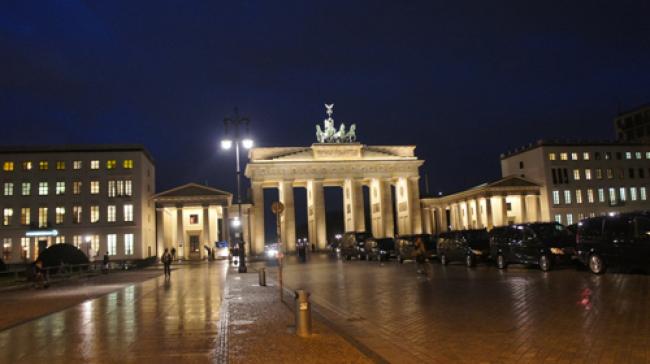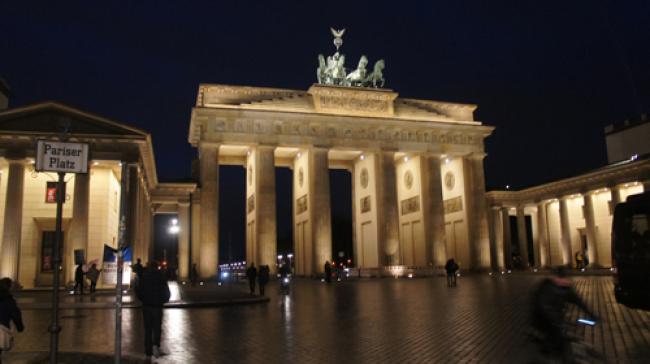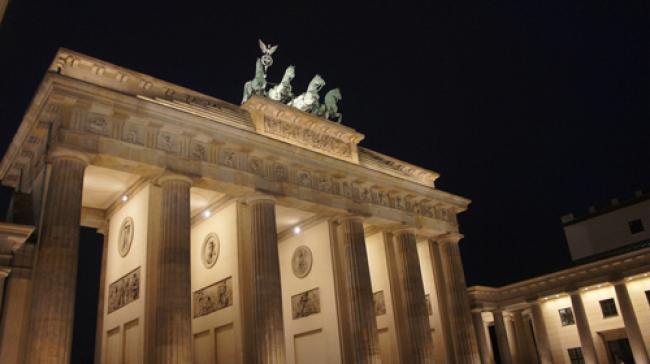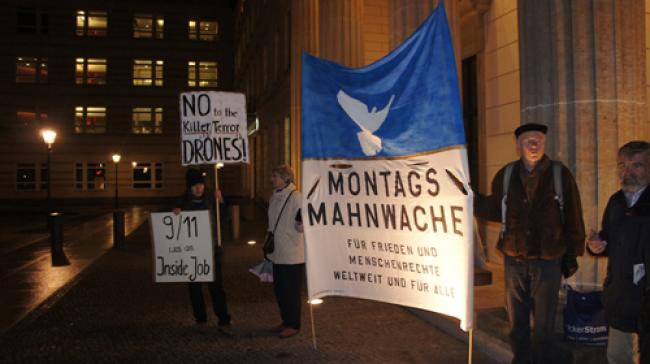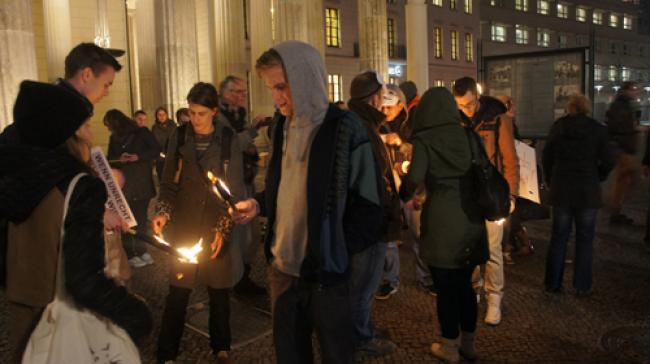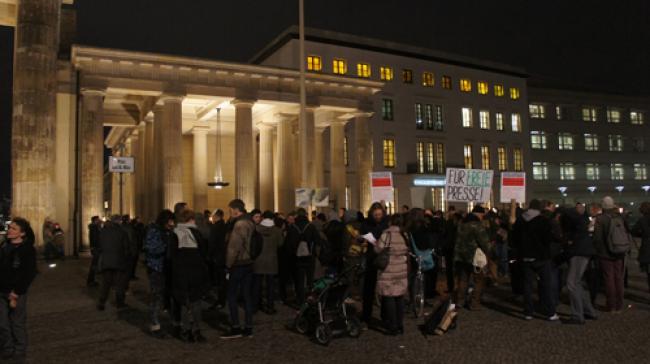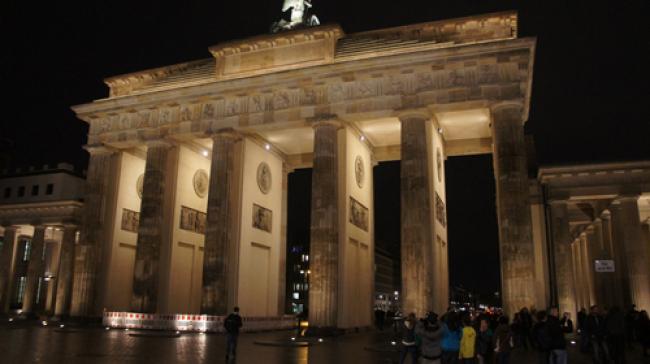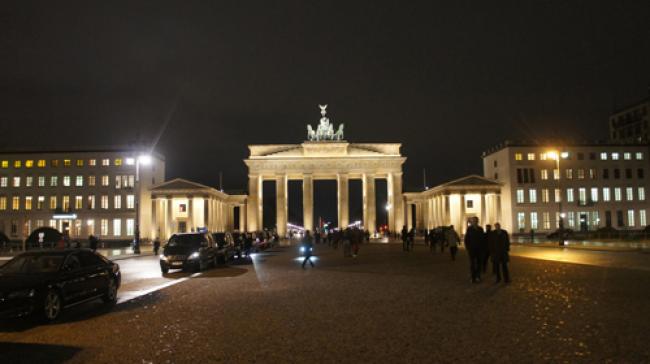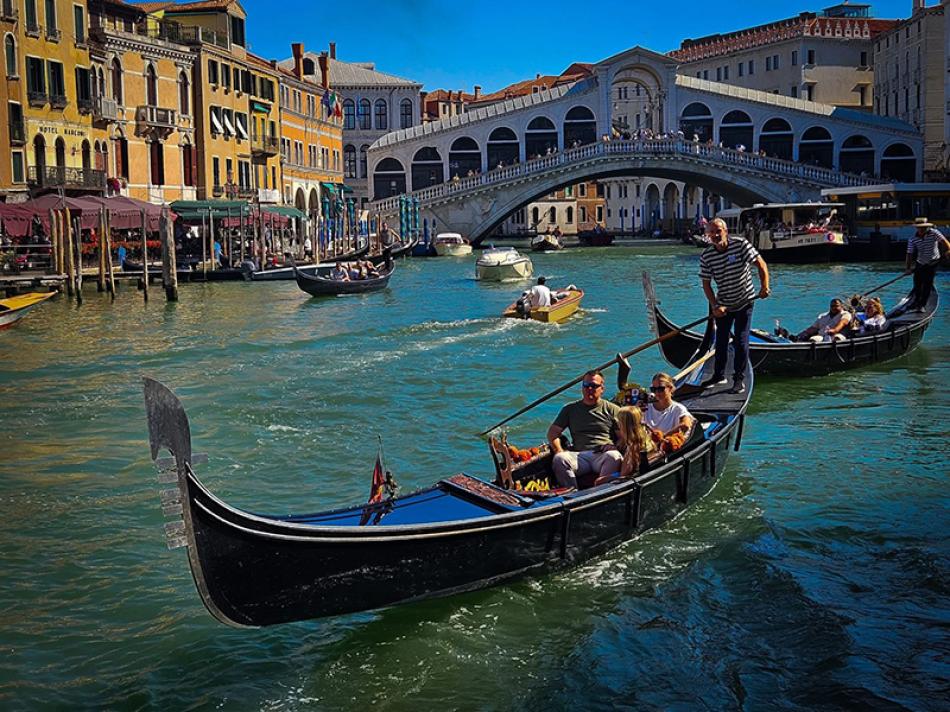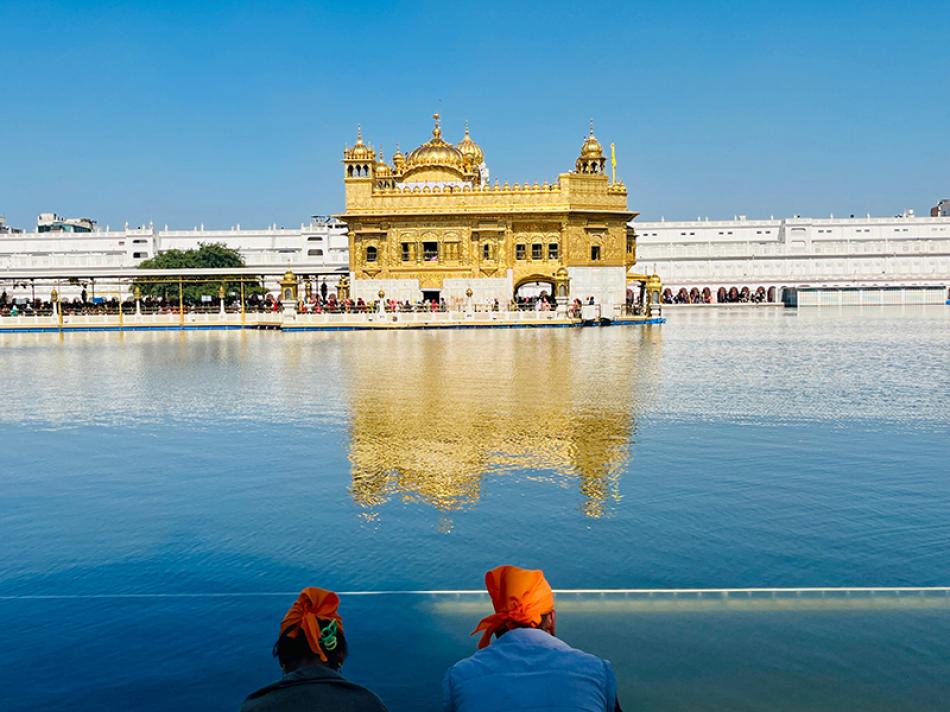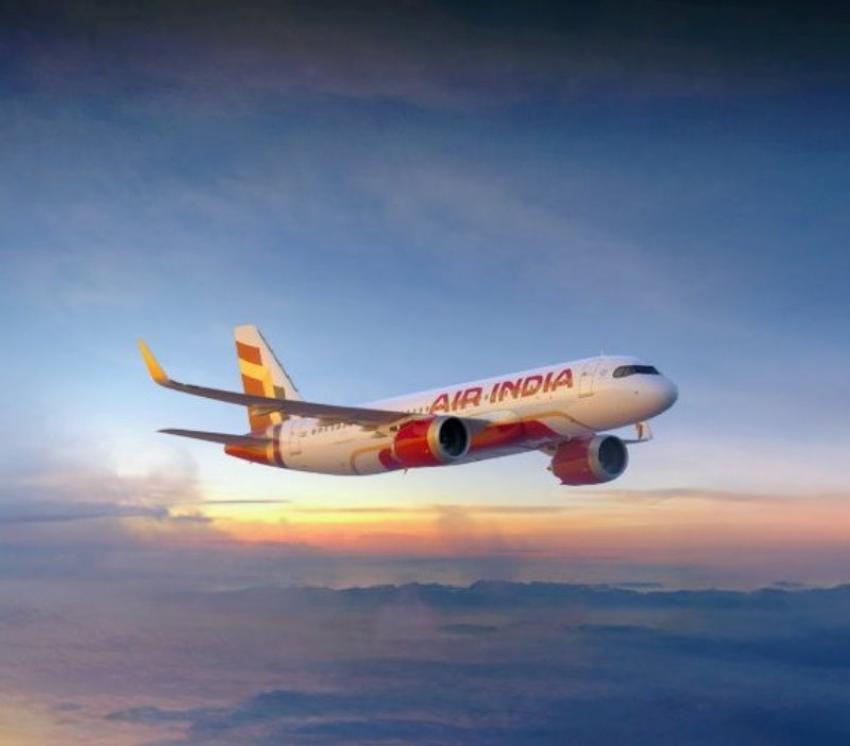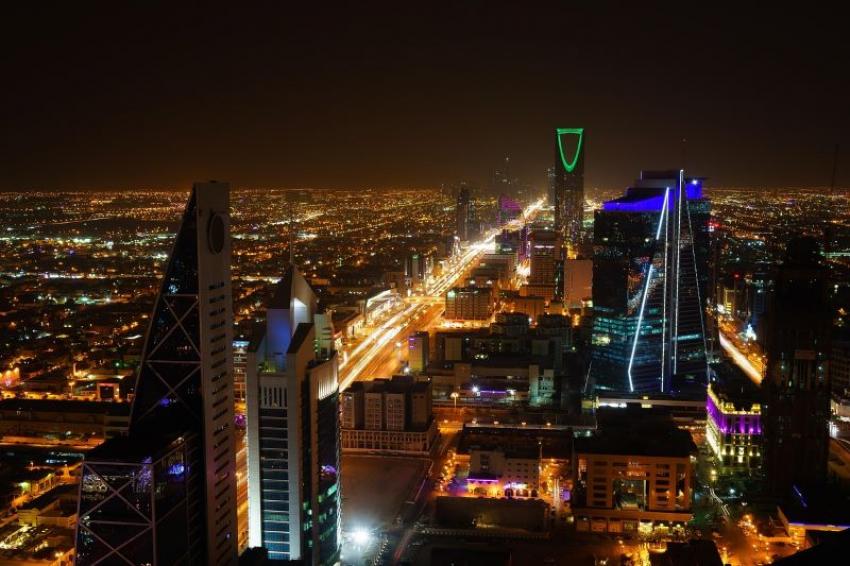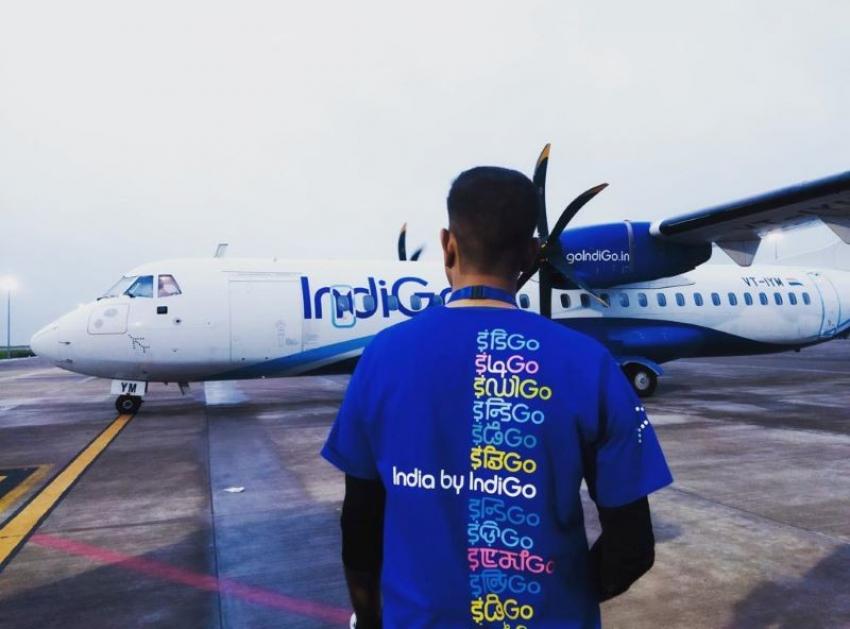The Brandenburg Gate (German: Brandenburger Tor) is a former city gate, rebuilt in the late 18th century as a neoclassical triumphal arch, and now one of the most well-known landmarks of Germany which also became the symbol of German unification in 1989 when the wall that divided the two Germany came down. The gate is located in the western part of the city at the junction of Unter den Linden and Ebertstraße, immediately west of thePariser Platz. Throughout its existence, the Brandenburg Gate was often a site for major historical events and is today considered a symbol of the tumultuous history of Europe and Germany, but also of European unity and peace. Notintown.net captures the gate during the night where people also hold peace meetings or protest injustice in the world. One such evening in March 2014.
The Brandenburg Gate (German: Brandenburger Tor) is a former city gate, rebuilt in the late 18th century as a neoclassical triumphal arch, and now one of the most well-known landmarks of Germany which also became the symbol of German unification in 1989 when the wall that divided the two Germany came down. The gate is located in the western part of the city at the junction of Unter den Linden and Ebertstraße, immediately west of thePariser Platz. Throughout its existence, the Brandenburg Gate was often a site for major historical events and is today considered a symbol of the tumultuous history of Europe and Germany, but also of European unity and peace. Notintown.net captures the gate during the night where people also hold peace meetings or protest injustice in the world. One such evening in March 2014.
The Brandenburg Gate (German: Brandenburger Tor) is a former city gate, rebuilt in the late 18th century as a neoclassical triumphal arch, and now one of the most well-known landmarks of Germany which also became the symbol of German unification in 1989 when the wall that divided the two Germany came down. The gate is located in the western part of the city at the junction of Unter den Linden and Ebertstraße, immediately west of thePariser Platz. Throughout its existence, the Brandenburg Gate was often a site for major historical events and is today considered a symbol of the tumultuous history of Europe and Germany, but also of European unity and peace. Notintown.net captures the gate during the night where people also hold peace meetings or protest injustice in the world. One such evening in March 2014.
The Brandenburg Gate (German: Brandenburger Tor) is a former city gate, rebuilt in the late 18th century as a neoclassical triumphal arch, and now one of the most well-known landmarks of Germany which also became the symbol of German unification in 1989 when the wall that divided the two Germany came down. The gate is located in the western part of the city at the junction of Unter den Linden and Ebertstraße, immediately west of thePariser Platz. Throughout its existence, the Brandenburg Gate was often a site for major historical events and is today considered a symbol of the tumultuous history of Europe and Germany, but also of European unity and peace. Notintown.net captures the gate during the night where people also hold peace meetings or protest injustice in the world. One such evening in March 2014.
The Brandenburg Gate (German: Brandenburger Tor) is a former city gate, rebuilt in the late 18th century as a neoclassical triumphal arch, and now one of the most well-known landmarks of Germany which also became the symbol of German unification in 1989 when the wall that divided the two Germany came down. The gate is located in the western part of the city at the junction of Unter den Linden and Ebertstraße, immediately west of thePariser Platz. Throughout its existence, the Brandenburg Gate was often a site for major historical events and is today considered a symbol of the tumultuous history of Europe and Germany, but also of European unity and peace. Notintown.net captures the gate during the night where people also hold peace meetings or protest injustice in the world. One such evening in March 2014.
The Brandenburg Gate (German: Brandenburger Tor) is a former city gate, rebuilt in the late 18th century as a neoclassical triumphal arch, and now one of the most well-known landmarks of Germany which also became the symbol of German unification in 1989 when the wall that divided the two Germany came down. The gate is located in the western part of the city at the junction of Unter den Linden and Ebertstraße, immediately west of thePariser Platz. Throughout its existence, the Brandenburg Gate was often a site for major historical events and is today considered a symbol of the tumultuous history of Europe and Germany, but also of European unity and peace. Notintown.net captures the gate during the night where people also hold peace meetings or protest injustice in the world. One such evening in March 2014.
The Brandenburg Gate (German: Brandenburger Tor) is a former city gate, rebuilt in the late 18th century as a neoclassical triumphal arch, and now one of the most well-known landmarks of Germany which also became the symbol of German unification in 1989 when the wall that divided the two Germany came down. The gate is located in the western part of the city at the junction of Unter den Linden and Ebertstraße, immediately west of thePariser Platz. Throughout its existence, the Brandenburg Gate was often a site for major historical events and is today considered a symbol of the tumultuous history of Europe and Germany, but also of European unity and peace. Notintown.net captures the gate during the night where people also hold peace meetings or protest injustice in the world. One such evening in March 2014.
The Brandenburg Gate (German: Brandenburger Tor) is a former city gate, rebuilt in the late 18th century as a neoclassical triumphal arch, and now one of the most well-known landmarks of Germany which also became the symbol of German unification in 1989 when the wall that divided the two Germany came down. The gate is located in the western part of the city at the junction of Unter den Linden and Ebertstraße, immediately west of thePariser Platz. Throughout its existence, the Brandenburg Gate was often a site for major historical events and is today considered a symbol of the tumultuous history of Europe and Germany, but also of European unity and peace. Notintown.net captures the gate during the night where people also hold peace meetings or protest injustice in the world. One such evening in March 2014.
The Brandenburg Gate (German: Brandenburger Tor) is a former city gate, rebuilt in the late 18th century as a neoclassical triumphal arch, and now one of the most well-known landmarks of Germany which also became the symbol of German unification in 1989 when the wall that divided the two Germany came down. The gate is located in the western part of the city at the junction of Unter den Linden and Ebertstraße, immediately west of thePariser Platz. Throughout its existence, the Brandenburg Gate was often a site for major historical events and is today considered a symbol of the tumultuous history of Europe and Germany, but also of European unity and peace. Notintown.net captures the gate during the night where people also hold peace meetings or protest injustice in the world. One such evening in March 2014.
